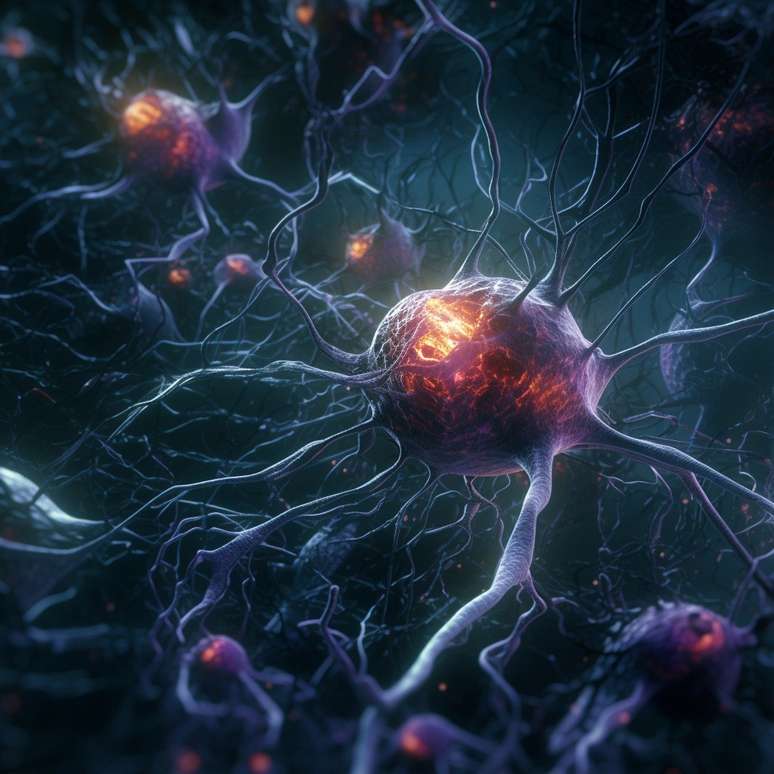Research has revealed that women’s brains have more neurons in the problem-solving area, while men’s brains have more neurons in the visual area. A recent Brazilian study, published in the scientific journal Cerebral Cortex, analyzed the impact of the difference between sexes and age on humans. the distribution of neurons in the cerebral cortex. Even though it is an analysis […]
Research has revealed that women’s brains have more neurons in the problem-solving area, while men’s brains have more neurons in the visual area.
A recent Brazilian study, published in the scientific journal Cerebral cortexanalyzed the impact of the difference between sexes and age on the distribution of neurons in the cerebral cortex. Although this is a complex analysis, in which understanding must relativize various issues, such as environmental factors and life experiences, research has revealed that the female brain has more neurons in the area of problem solving. While the male, in the visual area.
Analysis method
The research, conducted by the D’Or Institute for Research and Teaching (IDOR), the University of São Paulo (USP), the Federal University of Rio de Janeiro (UFRJ), the National Institute of Translational Neuroscience and from the University of California at San Francisco, analyzed 43 brains of deceased men and women. Being of different ages, provided by the USP Biobank for Aging Studies. The researchers selected only brains from patients with no diagnoses of neurological or psychiatric disorders and no history of alcohol or other drug abuse. This produced 32 male and 11 female brains, ranging in age from 25 to 87 years. They assessed brain tissue using the “isotropic fractionator” method, developed by neuroscientists Suzana Herculano-Houzel and Roberto Lent, which allows them to accurately estimate the number of cells in brain tissue.
The brain in numbers
The result showed that the cerebral cortex, one of the most advanced regions of the brain, has an average of 10.2 billion neurons, of which 34% are in the frontal lobe and 66% in the parietal, temporal and occipital lobes. Although men’s brains are 15% larger, the number of neurons in the cortex is similar in both sexes.
The difference is that men have more cells in the occipital cortex, responsible for visual processing. While women have greater neuronal density in the frontal lobe, linked to problem solving and planning. Previous studies indicated 50% more neurons in the olfactory bulb in women and 34% more neurons in the medial temporal lobe in men. The study does not establish a direct correlation between the number of neurons and specific functions. But it provides a basis for future research, as it highlights differences in performance on visual and linguistic tasks between the sexes and the different prevalence of some diseases.
In other words…
Fabiano de Abreu Agrela, post-doctoral in Neuroscience (University of California) and biologist, member of the SFN – Society of Neurosciences in the United States – and of the SBNeC – Brazilian Society of Neuroscience and Behavior -, states that the differences are linked to biological factors and environmental. “I always say that the gene is the engine that, together with environmental factors, shapes the organism. Differences between the male and female brain include variations in the thickness of the cerebral cortex, the size of the hippocampus and the neuronal density in regions such as the visual cortex. These structural differences can influence cognitive and behavioral abilities, such as emotion processing and spatial abilities”, introduces the expert.
Is there an origin for this differentiation between brains?
According to Agrela, this increased density of neurons in the prefrontal cortex of the female brain, an area linked to problem solving, could be linked to the evolution and demands of motherhood, for example, which require planning, organization and multitasking. However, this explanation should not be so pragmatic. “Problem solving is a complex skill that involves different areas of the brain and does not depend exclusively on neuronal density,” the professional emphasizes, in a warning.
And what explains, then, the greater number of neurons in the visual area of the male brain? “Hormonal and genetic factors, such as the influence of testosterone, which plays an important role in the formation of neural connections in this area from the embryonic stage,” replies the neuroscientist.
It’s a trend, but not a rule
Therefore yes, we can say that there is a tendency for women to have greater ease in tasks that involve language, communication and empathy. While men may have greater ease in tasks involving visuospatial skills and abstract logical reasoning. However, once again, it is important to highlight that this also depends on other factors, such as the living environment (which could be the home itself, or even society in general) and individual experiences. Furthermore, as Agrela points out, it is important to consider that skills can be developed and improved in both sexes.
“There is a common predominance, but obviously each individual is unique and may present more developed abilities in the opposite sex. The complex interaction of genetic, hormonal, environmental factors and life experiences influences the structure and function of the brain, making each brain unique. ”
Peculiarities of the brain and the ‘phenomenon’ of neuroplasticity
There is therefore a genetic basis that generates differences in the distribution of neurons between the sexes, which influence some tendencies in cognitive abilities. However, this should not be seen as a fixed rule. “A woman can develop skills in areas traditionally associated with men and surpass many men in various cognitive abilities, and vice versa,” explains the professional.
The ability to ‘go against’ this predisposition is thanks to neuroplasticity, an ability that our brain has to ‘reprogram’ itself, as the Post-Doctorate in Neuroscience explains. “It refers to the brain’s ability to adapt and change in response to experiences throughout life. This ability allows the distribution of neurons to adapt, influenced by the environment and experiences,” he explains. “Such factors can favor the development of new neural connections or modify the strength of existing connections, thus affecting the structure and functionality of the brain”, adds and concludes the expert.
Source: Terra
Ben Stock is a lifestyle journalist and author at Gossipify. He writes about topics such as health, wellness, travel, food and home decor. He provides practical advice and inspiration to improve well-being, keeps readers up to date with latest lifestyle news and trends, known for his engaging writing style, in-depth analysis and unique perspectives.









